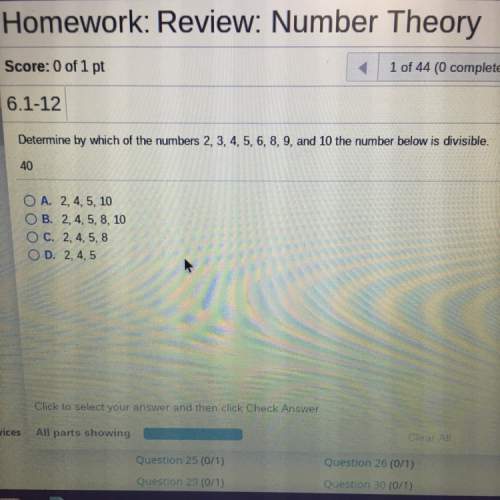
Mathematics, 13.07.2019 03:30 jflakes406
Factor f(x) = 15x^3 - 15x^2 - 90x completely and determine the exact value(s) of the zero(s) and enter them as a comma separated list. x =

Answers: 2


Other questions on the subject: Mathematics

Mathematics, 21.06.2019 15:00, maraa013001
Use addition and subtraction to simplify the following polynomials. a. add polynomials: (3 – 4x + 8x^2) + (–6 + 2x – 5x^2) step 1: rewrite the polynomials without the parentheses. step 2: write the polynomial in descending order and use parentheses around like terms. step 3: add the like terms identified in step 2 to simplify the polynomial. b. subtract polynomials: (3x – 5 – 7x^2) – (–2 + 6x^2 – 5x) step 1: rewrite the polynomials without the parentheses. remember to multiply each term in the second parentheses by –1. show your work. step 2: write the polynomial in descending order and use parentheses around like terms. step 3: add the like terms identified in step 2 to simplify the polynomial.
Answers: 3


Mathematics, 21.06.2019 20:00, amylumey2005
Wich statement could be used to explain why the function h(x)= x^3 has an inverse relation that is also a function
Answers: 3

Mathematics, 21.06.2019 21:00, mawawakaiii
Asequence has its first term equal to 4, and each term of the sequence is obtained by adding 2 to the previous term. if f(n) represents the nth term of the sequence, which of the following recursive functions best defines this sequence? (1 point) f(1) = 2 and f(n) = f(n − 1) + 4; n > 1 f(1) = 4 and f(n) = f(n − 1) + 2n; n > 1 f(1) = 2 and f(n) = f(n − 1) + 4n; n > 1 f(1) = 4 and f(n) = f(n − 1) + 2; n > 1 i will award !
Answers: 1
You know the right answer?
Factor f(x) = 15x^3 - 15x^2 - 90x completely and determine the exact value(s) of the zero(s) and ent...
Questions in other subjects:

Social Studies, 31.10.2019 17:31


History, 31.10.2019 17:31


Mathematics, 31.10.2019 17:31



Health, 31.10.2019 17:31


Mathematics, 31.10.2019 17:31


 . We are asked to find the zeros of our given function.
. We are asked to find the zeros of our given function.
 .
. 
 and whose product is
and whose product is  . We know such two numbers are
. We know such two numbers are  .
.










